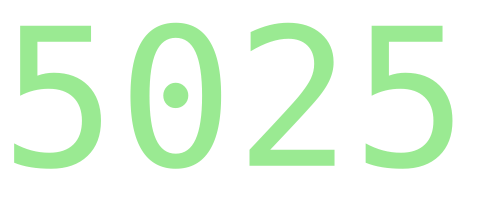Apprentices were particularly aggrieved during “the Pause.” Our hands were quarantined, narrowing our learning traditions to an “asymmetrical focus.” millennia , “reciprocally attentive and finely tuned towards each other and the developing skill.”
Welders, for example, need to learn safe ways to use dangerous technology. They do so standing next to each other in welding booths. Learning has always been face to face, even with helmets on. Consider the fact that peer review strategies accelerate apprentices’ welding skill acquisition,
Hence the irony: apprentices are very technically skilled, but our modes of communications (e.g., the Luddites ) have never been online, and our culture has always been secretive with the outside world. Using social ICTs has never been part of our tradition, but it is now, and going back seems unwise.
RQ: How can social ICTs strengthen apprenticeship learning in the construction trades?
Case Study
Summary
This case study’s objective was to observe how the organization of online vocational learning changed during the coronavirus pandemic, and whether these changes can benefit learning in vocational schools.
The German vocational education system applies a “dual apprenticeship ” model: learning theoretical knowledge at a vocational school, and job-related knowledge at a training company. The Chambers of Skilled Crafts are responsible for producing “Gesellenprüfung ,” the examinations that upon passing, elevate an apprentice to journeyman status.
Two school closures occurred in Germany–the first in spring 2020, the second in winter 2020 to April 2021.
The data for this case study came from retrospective apprentices’ assessments, using a a computer-assisted self-interview format, of 103 males (age: 17–44, mean: 20.8, SD: 3.7) and 11 females (age: 17–24, mean: 19.3, SD: 1.9) in southern Germany. These assessments were conducted at several Chambers counseling centers.
For all four RQ’s, apprentices’ ratings improved for the second school closures.
and also refers to the authority of the so-called “Chambers.” (at 3 of 18). In our country, we call them the trades unions. Our national standard for building trades is the Multi-Craft Core Curriculum (MC3) by the North America’s Building Trades Unions (NABTU ). It is exactly that, a curriculum of 9 modules (slide 14 ). It also offers best practices for distance learning. But as to vocational standards, they rest within the conundrum at the beginning of this post: apprentices learn “at the hip,” the standards, it follows, flow from the master craftsman, not a piece of paper.
The closest Regents standard to building trades apprenticeship is the Career Development and Occupational Studies (CDOS ), Standard 3b : “Workplace Cleanup” Activity (p. 263). But almost all of the CDOS Standards are directed towards “professional” as opposed to “vocational” careers.
Rewrite #1
Background
As a trades instructor, “deep learning”
And yet, when COVID quarantined our hands, a conundrum arose when forced to employ remote learning for the first time…
fn I have a parallel position as to assessments. For example, Popham rightly identifies the origin of the crisis of applying norm spreading aptitude tests to teacher quality measurement as Binet and Army Alpha.
Hence, the context of apprenticeship skews many assumptions and inferences made as to the application of technology into schools.
Case Study
10492329
{10492329:Z72G4E4C}
apa
50
29520
https://ubercrawl.net/wp-content/plugins/zotpress/
%7B%22status%22%3A%22success%22%2C%22updateneeded%22%3Afalse%2C%22instance%22%3A%22zotpress-9dd0f20a4c1c3a03688b20b537c6a905%22%2C%22meta%22%3A%7B%22request_last%22%3A0%2C%22request_next%22%3A0%2C%22used_cache%22%3Atrue%7D%2C%22data%22%3A%5B%7B%22key%22%3A%22Z72G4E4C%22%2C%22library%22%3A%7B%22id%22%3A10492329%7D%2C%22meta%22%3A%7B%22creatorSummary%22%3A%22Seyffer%20et%20al.%22%2C%22parsedDate%22%3A%222022%22%2C%22numChildren%22%3A3%7D%2C%22bib%22%3A%22%3Cdiv%20class%3D%5C%22csl-bib-body%5C%22%20style%3D%5C%22line-height%3A%202%3B%20padding-left%3A%201em%3B%20text-indent%3A-1em%3B%5C%22%3E%5Cn%20%20%3Cdiv%20class%3D%5C%22csl-entry%5C%22%3ESeyffer%2C%20S.%2C%20Hochmuth%2C%20M.%2C%20%26amp%3B%20Frey%2C%20A.%20%282022%29.%20Challenges%20of%20the%20Coronavirus%20Pandemic%20as%20an%20Opportunity%20for%20Sustainable%20Digital%20Learning%20in%20Vocational%20Education%20and%20Training%20%28VET%29.%20%3Ci%3ESustainability%3C%5C%2Fi%3E%2C%20%3Ci%3E14%3C%5C%2Fi%3E%2813%29%2C%207692.%20%3Ca%20href%3D%27https%3A%5C%2F%5C%2Fdoi.org%5C%2F10.3390%5C%2Fsu14137692%27%3Ehttps%3A%5C%2F%5C%2Fdoi.org%5C%2F10.3390%5C%2Fsu14137692%3C%5C%2Fa%3E%3C%5C%2Fdiv%3E%5Cn%3C%5C%2Fdiv%3E%22%2C%22data%22%3A%7B%22itemType%22%3A%22journalArticle%22%2C%22title%22%3A%22Challenges%20of%20the%20Coronavirus%20Pandemic%20as%20an%20Opportunity%20for%20Sustainable%20Digital%20Learning%20in%20Vocational%20Education%20and%20Training%20%28VET%29%22%2C%22creators%22%3A%5B%7B%22creatorType%22%3A%22author%22%2C%22firstName%22%3A%22Silke%22%2C%22lastName%22%3A%22Seyffer%22%7D%2C%7B%22creatorType%22%3A%22author%22%2C%22firstName%22%3A%22Melanie%22%2C%22lastName%22%3A%22Hochmuth%22%7D%2C%7B%22creatorType%22%3A%22author%22%2C%22firstName%22%3A%22Andreas%22%2C%22lastName%22%3A%22Frey%22%7D%5D%2C%22abstractNote%22%3A%22In%20addition%20to%20restrictions%20in%20training%20companies%2C%20vocational%20schools%20were%20also%20closed%20due%20to%20the%20coronavirus%20pandemic%20in%20Germany.%20After%20the%20unexpected%20first%20lockdown%2C%20it%20was%20the%20challenge%20of%20all%20those%20involved%20to%20draw%20lessons%20from%20the%20emergent%20weaknesses%20in%20the%20system%20and%20to%20prepare%20for%20further%20school%20closures.%20These%20preparations%20primarily%20involved%20shifting%20to%20digital%20learning%20platforms.%20This%20article%20uses%20a%20simple%20and%20easy%20to%20understand%20research%20design%20and%20focuses%20from%20a%20practical%20point%20of%20view%20on%20the%20results%20of%20a%20quantitative%20online%20survey%20conducted%20by%20the%20University%20of%20Applied%20Labour%20Studies%20Mannheim%20among%20143%20apprentices%20in%20southern%20Germany%20on%20the%20differences%20between%20the%20first%20and%20second%20school%20closures%20with%20regard%20to%20live%20communication%20with%20teachers%2C%20attention%20to%20apprentice%20concerns%20by%20the%20vocational%20school%2C%20access%20to%20digital%20devices%2C%20and%20the%20use%20of%20these%20devices.%20The%20results%20of%20the%20survey%20show%20that%2C%20according%20to%20the%20apprentices%5Cu2019%20assessments%2C%20the%20vocational%20schools%20were%20able%20to%20improve%20live%20communication%20as%20well%20as%20better%20attend%20to%20the%20apprentices%5Cu2019%20concerns%20between%20lockdowns.%20In%20addition%2C%20the%20apprentices%20were%20able%20to%20improve%20their%20own%20digital%20devices%20and%20competencies%20and%2C%20to%20a%20large%20extent%2C%20make%20up%20for%20deficits.%20They%20were%20better%20able%20to%20use%20digital%20devices%20and%20software%20during%20the%20second%20school%20closure%20compared%20to%20the%20first.%20Gender%20differences%20were%20observed.%20However%2C%20despite%20significant%20improvements%2C%20there%20is%20still%20a%20need%20to%20modernize%20and%20innovate%2C%20which%20should%20be%20considered%20in%20future%20digital%20developments%20at%20schools.%22%2C%22date%22%3A%222022%22%2C%22language%22%3A%22English%22%2C%22DOI%22%3A%2210.3390%5C%2Fsu14137692%22%2C%22ISSN%22%3A%22%22%2C%22url%22%3A%22https%3A%5C%2F%5C%2Fwww.proquest.com%5C%2Fdocview%5C%2F2686148410%5C%2Fabstract%5C%2FD53F2D94C3AA4D1CPQ%5C%2F1%22%2C%22collections%22%3A%5B%22H4ZMRGV2%22%5D%2C%22dateModified%22%3A%222023-09-29T17%3A01%3A56Z%22%7D%7D%5D%7D
Seyffer, S., Hochmuth, M., & Frey, A. (2022). Challenges of the Coronavirus Pandemic as an Opportunity for Sustainable Digital Learning in Vocational Education and Training (VET).
Sustainability ,
14 (13), 7692.
https://doi.org/10.3390/su14137692
I chose this case study,
The research questions were designed to capture dual-apprentices’ learning experiences during two COVID school closures in 2020 and 2021:
From the apprentices’ point of view, did the attentiveness of the vocational school improve between the first and second school closure?
Did live communication improve from the apprentices’ perspectives?
Did the equipment with digital devices improve among the apprentices?
Did the apprentices’ assessments of their own digital competence improve?
Analysis of the apprentices’ retrospective assessments found improvements in each RQ. Its findings can be aligned with our readings with the following table:
Case Study Canon Comprehensive support is a most important prerequisite for successful online learning. (p. 5) Constructivism Live communication should be improved to consider “motivational and emotional aspects as well as students’ living situations in order to promote sustainable learning.” (p. 12) “Deep Learning” “…2021, the situation had improved significantly compared to 2020. In this context, distance learning occurred in a hybrid form, combining synchronous digital learning units with asynchronous content provisions.” (p. 7) Technology acquisition Apprentices must be empowered to use digital media to learn in a self-organized way. Teaching these digital competencies will be a key task for vocational schools in the coming years. (p. 12) Productive instructional strategies competencies of the teaching staff should be promoted in the long term in order to create a differentiated teaching and learning provision “Drive by” doesn’t work
Critique
The paper notes that during the first closure, “standardized concepts for distance learning did not exist. ” None are mentioned anywhere in the paper. Fullan defines external accountability as “securing much better accountability.”
There are more qualitative standards that innovators can look to in this regime. For example, Slöyd, similar to Arendt’s “Homo Farber,”
is an attitude to work that connects to honesty, determination and even moral and ethical judgements; honesty, because there is no gain in cheating on the material, determination is needed to overcome material resistance, and moral and ethical judgement in knowing what to do and when to do it.
“Digitalizing” trades learning traditions requires us to fundamentally revalue the position of standards in our learning communities. Unique to our traditions and perspectives, we cannot simply “plug in” digital literacy to our existing standards as we have been especially stubborn in keeping our standards, “plugged out.”
What motivates many workers in the trades is an escape from “spiritual dyspepsia” that alienated workers often experience.
The second criticism flows from the case study’s correct observation that dual apprenticeships are highly “context-related learning” and are a “complex, comprehensive learning process.” (p. 2 of 18). And that capturing emotions
{10492329:7AGLBN2I};{10492329:3HIKCBGP};{10492329:GG9JH67G};{10492329:F2M8FAHF};{10492329:LXX7SBRP};{10492329:3XUF4YPB};{10492329:7ZF4Z5TS};{10492329:FBZ8ZWRB};{10492329:FJ9VZFAV};{10492329:UW2M8K6Y};{10492329:Z72G4E4C};{10492329:3XUF4YPB};{10492329:LXX7SBRP};{10492329:FBG52GAC};{10492329:HN2A63KR};{10492329:GG9JH67G};{10492329:L6DX3599};{10492329:T5I6HA95};{10492329:5VEXVXWB};{10492329:ECR2X8ZH}
apa
asc
0
29520
%7B%22status%22%3A%22success%22%2C%22updateneeded%22%3Afalse%2C%22instance%22%3A%22zotpress-68f07e7d64e58576c3485d74890636fa%22%2C%22meta%22%3A%7B%22request_last%22%3A0%2C%22request_next%22%3A0%2C%22used_cache%22%3Atrue%7D%2C%22data%22%3A%5B%7B%22key%22%3A%22GG9JH67G%22%2C%22library%22%3A%7B%22id%22%3A10492329%7D%2C%22meta%22%3A%7B%22creatorSummary%22%3A%22Meier%22%2C%22parsedDate%22%3A%222023-06-26%22%2C%22numChildren%22%3A2%7D%2C%22bib%22%3A%22%3Cdiv%20class%3D%5C%22csl-bib-body%5C%22%20style%3D%5C%22line-height%3A%202%3B%20padding-left%3A%201em%3B%20text-indent%3A-1em%3B%5C%22%3E%5Cn%20%20%3Cdiv%20class%3D%5C%22csl-entry%5C%22%3EMeier%2C%20E.%20%282023%2C%20June%2026%29.%20%3Ci%3ETransforming%20Education%20or%20Digitizing%20the%20Status%20Quo%3F%3C%5C%2Fi%3E%20ASCD.%20%3Ca%20href%3D%27https%3A%5C%2F%5C%2Fwww.ascd.org%5C%2Fel%5C%2Farticles%5C%2Ftransforming-education-or-digitizing-the-status-quo%27%3Ehttps%3A%5C%2F%5C%2Fwww.ascd.org%5C%2Fel%5C%2Farticles%5C%2Ftransforming-education-or-digitizing-the-status-quo%3C%5C%2Fa%3E%3C%5C%2Fdiv%3E%5Cn%3C%5C%2Fdiv%3E%22%2C%22data%22%3A%7B%22itemType%22%3A%22webpage%22%2C%22title%22%3A%22Transforming%20Education%20or%20Digitizing%20the%20Status%20Quo%3F%22%2C%22creators%22%3A%5B%7B%22creatorType%22%3A%22author%22%2C%22firstName%22%3A%22Ellen%22%2C%22lastName%22%3A%22Meier%22%7D%5D%2C%22abstractNote%22%3A%22Four%20key%20lessons%20on%20using%20technology%20to%20catalyze%20deeper%20learning.%22%2C%22date%22%3A%22June%2026%2C%202023%22%2C%22url%22%3A%22https%3A%5C%2F%5C%2Fwww.ascd.org%5C%2Fel%5C%2Farticles%5C%2Ftransforming-education-or-digitizing-the-status-quo%22%2C%22language%22%3A%22en%22%2C%22collections%22%3A%5B%22S5SA6BBX%22%5D%2C%22dateModified%22%3A%222023-10-21T18%3A05%3A41Z%22%7D%7D%2C%7B%22key%22%3A%22LXX7SBRP%22%2C%22library%22%3A%7B%22id%22%3A10492329%7D%2C%22meta%22%3A%7B%22creatorSummary%22%3A%22Sawyer%22%2C%22parsedDate%22%3A%222005%22%2C%22numChildren%22%3A1%7D%2C%22bib%22%3A%22%3Cdiv%20class%3D%5C%22csl-bib-body%5C%22%20style%3D%5C%22line-height%3A%202%3B%20padding-left%3A%201em%3B%20text-indent%3A-1em%3B%5C%22%3E%5Cn%20%20%3Cdiv%20class%3D%5C%22csl-entry%5C%22%3ESawyer%2C%20R.%20K.%20%282005%29.%20Introduction%3A%20The%20New%20Science%20of%20Learning.%20In%20%3Ci%3EThe%20Cambridge%20Handbook%20of%20the%20Learning%20Sciences%3C%5C%2Fi%3E%20%28pp.%201%26%23×2013%3B16%29.%20Cambridge%20University%20Press.%20https%3A%5C%2F%5C%2Fdoi.org%5C%2F10.1017%5C%2FCBO9780511816833.002%3C%5C%2Fdiv%3E%5Cn%3C%5C%2Fdiv%3E%22%2C%22data%22%3A%7B%22itemType%22%3A%22bookSection%22%2C%22title%22%3A%22Introduction%3A%20The%20New%20Science%20of%20Learning%22%2C%22creators%22%3A%5B%7B%22creatorType%22%3A%22author%22%2C%22firstName%22%3A%22R.%20Keith%22%2C%22lastName%22%3A%22Sawyer%22%7D%5D%2C%22abstractNote%22%3A%22By%20the%20twentieth%20century%2C%20all%20major%20industrialized%20countries%20offered%20formal%20schooling%20to%20all%20of%20their%20children.%20When%20these%20schools%20took%20shape%20in%20the%20nineteenth%20and%20twentieth%20centuries%2C%20scientists%20didn%27t%20know%20very%20much%20about%20how%20people%20learn.%20Even%20by%20the%201920s%2C%20when%20schools%20began%20to%20become%20the%20large%20bureaucratic%20institutions%20that%20we%20know%20today%2C%20there%20still%20was%20no%20sustained%20study%20of%20how%20people%20learn.%20As%20a%20result%2C%20the%20schools%20we%20have%20today%20were%20designed%20around%20commonsense%20assumptions%20that%20had%20never%20been%20tested%20scientifically%3AKnowledge%20is%20a%20collection%20of%20facts%20about%20the%20world%20and%20procedures%20for%20how%20to%20solve%20problems.%20Facts%20are%20statements%20like%20%5Cu201cThe%20earth%20is%20tilted%20on%20its%20axis%20by%2023.45%20degrees%5Cu201d%20and%20procedures%20are%20step-by-step%20instructions%20like%20how%20to%20do%20multidigit%20addition%20by%20carrying%20to%20the%20next%20column.The%20goal%20of%20schooling%20is%20to%20get%20these%20facts%20and%20procedures%20into%20the%20student%27s%20head.%20People%20are%20considered%20to%20be%20educated%20when%20they%20possess%20a%20large%20collection%20of%20these%20facts%20and%20procedures.Teachers%20know%20these%20facts%20and%20procedures%2C%20and%20their%20job%20is%20to%20transmit%20them%20to%20students.Simpler%20facts%20and%20procedures%20should%20be%20learned%20first%2C%20followed%20by%20progressively%20more%20complex%20facts%20and%20procedures.%20The%20definitions%20of%20%5Cu201csimplicity%5Cu201d%20and%20%5Cu201ccomplexity%5Cu201d%20and%20the%20proper%20sequencing%20of%20material%20were%20determined%20either%20by%20teachers%2C%20by%20textbook%20authors%2C%20or%20by%20asking%20expert%20adults%20like%20mathematicians%2C%20scientists%2C%20or%20historians%20%5Cu2013%20not%20by%20studying%20how%20children%20actually%20learn.The%20way%20to%20determine%20the%20success%20of%20schooling%20is%20to%20test%20students%20to%20see%20how%20many%20of%20these%20facts%20and%20procedures%20they%20have%20acquired.%22%2C%22bookTitle%22%3A%22The%20Cambridge%20Handbook%20of%20the%20Learning%20Sciences%22%2C%22date%22%3A%222005%22%2C%22language%22%3A%22eng%22%2C%22ISBN%22%3A%22978-0-521-60777-3%22%2C%22url%22%3A%22%22%2C%22collections%22%3A%5B%22Q3EZIBVJ%22%5D%2C%22dateModified%22%3A%222023-10-07T14%3A40%3A24Z%22%7D%7D%2C%7B%22key%22%3A%22Z72G4E4C%22%2C%22library%22%3A%7B%22id%22%3A10492329%7D%2C%22meta%22%3A%7B%22creatorSummary%22%3A%22Seyffer%20et%20al.%22%2C%22parsedDate%22%3A%222022%22%2C%22numChildren%22%3A3%7D%2C%22bib%22%3A%22%3Cdiv%20class%3D%5C%22csl-bib-body%5C%22%20style%3D%5C%22line-height%3A%202%3B%20padding-left%3A%201em%3B%20text-indent%3A-1em%3B%5C%22%3E%5Cn%20%20%3Cdiv%20class%3D%5C%22csl-entry%5C%22%3ESeyffer%2C%20S.%2C%20Hochmuth%2C%20M.%2C%20%26amp%3B%20Frey%2C%20A.%20%282022%29.%20Challenges%20of%20the%20Coronavirus%20Pandemic%20as%20an%20Opportunity%20for%20Sustainable%20Digital%20Learning%20in%20Vocational%20Education%20and%20Training%20%28VET%29.%20%3Ci%3ESustainability%3C%5C%2Fi%3E%2C%20%3Ci%3E14%3C%5C%2Fi%3E%2813%29%2C%207692.%20%3Ca%20href%3D%27https%3A%5C%2F%5C%2Fdoi.org%5C%2F10.3390%5C%2Fsu14137692%27%3Ehttps%3A%5C%2F%5C%2Fdoi.org%5C%2F10.3390%5C%2Fsu14137692%3C%5C%2Fa%3E%3C%5C%2Fdiv%3E%5Cn%3C%5C%2Fdiv%3E%22%2C%22data%22%3A%7B%22itemType%22%3A%22journalArticle%22%2C%22title%22%3A%22Challenges%20of%20the%20Coronavirus%20Pandemic%20as%20an%20Opportunity%20for%20Sustainable%20Digital%20Learning%20in%20Vocational%20Education%20and%20Training%20%28VET%29%22%2C%22creators%22%3A%5B%7B%22creatorType%22%3A%22author%22%2C%22firstName%22%3A%22Silke%22%2C%22lastName%22%3A%22Seyffer%22%7D%2C%7B%22creatorType%22%3A%22author%22%2C%22firstName%22%3A%22Melanie%22%2C%22lastName%22%3A%22Hochmuth%22%7D%2C%7B%22creatorType%22%3A%22author%22%2C%22firstName%22%3A%22Andreas%22%2C%22lastName%22%3A%22Frey%22%7D%5D%2C%22abstractNote%22%3A%22In%20addition%20to%20restrictions%20in%20training%20companies%2C%20vocational%20schools%20were%20also%20closed%20due%20to%20the%20coronavirus%20pandemic%20in%20Germany.%20After%20the%20unexpected%20first%20lockdown%2C%20it%20was%20the%20challenge%20of%20all%20those%20involved%20to%20draw%20lessons%20from%20the%20emergent%20weaknesses%20in%20the%20system%20and%20to%20prepare%20for%20further%20school%20closures.%20These%20preparations%20primarily%20involved%20shifting%20to%20digital%20learning%20platforms.%20This%20article%20uses%20a%20simple%20and%20easy%20to%20understand%20research%20design%20and%20focuses%20from%20a%20practical%20point%20of%20view%20on%20the%20results%20of%20a%20quantitative%20online%20survey%20conducted%20by%20the%20University%20of%20Applied%20Labour%20Studies%20Mannheim%20among%20143%20apprentices%20in%20southern%20Germany%20on%20the%20differences%20between%20the%20first%20and%20second%20school%20closures%20with%20regard%20to%20live%20communication%20with%20teachers%2C%20attention%20to%20apprentice%20concerns%20by%20the%20vocational%20school%2C%20access%20to%20digital%20devices%2C%20and%20the%20use%20of%20these%20devices.%20The%20results%20of%20the%20survey%20show%20that%2C%20according%20to%20the%20apprentices%5Cu2019%20assessments%2C%20the%20vocational%20schools%20were%20able%20to%20improve%20live%20communication%20as%20well%20as%20better%20attend%20to%20the%20apprentices%5Cu2019%20concerns%20between%20lockdowns.%20In%20addition%2C%20the%20apprentices%20were%20able%20to%20improve%20their%20own%20digital%20devices%20and%20competencies%20and%2C%20to%20a%20large%20extent%2C%20make%20up%20for%20deficits.%20They%20were%20better%20able%20to%20use%20digital%20devices%20and%20software%20during%20the%20second%20school%20closure%20compared%20to%20the%20first.%20Gender%20differences%20were%20observed.%20However%2C%20despite%20significant%20improvements%2C%20there%20is%20still%20a%20need%20to%20modernize%20and%20innovate%2C%20which%20should%20be%20considered%20in%20future%20digital%20developments%20at%20schools.%22%2C%22date%22%3A%222022%22%2C%22language%22%3A%22English%22%2C%22DOI%22%3A%2210.3390%5C%2Fsu14137692%22%2C%22ISSN%22%3A%22%22%2C%22url%22%3A%22https%3A%5C%2F%5C%2Fwww.proquest.com%5C%2Fdocview%5C%2F2686148410%5C%2Fabstract%5C%2FD53F2D94C3AA4D1CPQ%5C%2F1%22%2C%22collections%22%3A%5B%22H4ZMRGV2%22%5D%2C%22dateModified%22%3A%222023-09-29T17%3A01%3A56Z%22%7D%7D%2C%7B%22key%22%3A%22FJ9VZFAV%22%2C%22library%22%3A%7B%22id%22%3A10492329%7D%2C%22meta%22%3A%7B%22creatorSummary%22%3A%22Ladson-Billings%22%2C%22parsedDate%22%3A%222021-01-02%22%2C%22numChildren%22%3A1%7D%2C%22bib%22%3A%22%3Cdiv%20class%3D%5C%22csl-bib-body%5C%22%20style%3D%5C%22line-height%3A%202%3B%20padding-left%3A%201em%3B%20text-indent%3A-1em%3B%5C%22%3E%5Cn%20%20%3Cdiv%20class%3D%5C%22csl-entry%5C%22%3ELadson-Billings%2C%20G.%20%282021%29.%202%20I%26%23×2019%3Bm%20Here%20for%20the%20Hard%20Re-Set%3A%20Post%20Pandemic%20Pedagogy%20to%20Preserve%20Our%20Culture.%20%3Ci%3EEquity%20%26amp%3B%20Excellence%20in%20Education%3C%5C%2Fi%3E%2C%20%3Ci%3E54%3C%5C%2Fi%3E%281%29%2C%2068%26%23×2013%3B78.%20%3Ca%20href%3D%27https%3A%5C%2F%5C%2Fdoi.org%5C%2F10.1080%5C%2F10665684.2020.1863883%27%3Ehttps%3A%5C%2F%5C%2Fdoi.org%5C%2F10.1080%5C%2F10665684.2020.1863883%3C%5C%2Fa%3E%3C%5C%2Fdiv%3E%5Cn%3C%5C%2Fdiv%3E%22%2C%22data%22%3A%7B%22itemType%22%3A%22journalArticle%22%2C%22title%22%3A%222%20I%5Cu2019m%20Here%20for%20the%20Hard%20Re-Set%3A%20Post%20Pandemic%20Pedagogy%20to%20Preserve%20Our%20Culture%22%2C%22creators%22%3A%5B%7B%22creatorType%22%3A%22author%22%2C%22firstName%22%3A%22Gloria%22%2C%22lastName%22%3A%22Ladson-Billings%22%7D%5D%2C%22abstractNote%22%3A%22The%20challenge%20of%20the%20COVID-19%20pandemic%20exposed%20many%20of%20the%20nation%5Cu2019s%20vulnerabilities%5Cu2014health%20care%2C%20economic%2C%20climate%2C%20and%20educational%20disparities%20%5Cu2014and%20put%20us%20all%20on%20alert.%20While%20many%20are%20scrambling%20for%20solutions%20to%20return%20to%20school%20in%20safe%20ways%2C%20this%20article%20speaks%20to%20the%20need%20to%20fundamentally%20rethink%20education%20and%20consider%20the%20pandemic%20as%20an%20opportunity%20to%20restart%2C%20or%20more%20precisely%20re-set%2C%20education%20using%20a%20more%20robust%20and%20culturally%20centered%20pedagogy.%20This%20article%20provides%20examples%20of%20the%20new%20ideas%20that%20scholars%20and%20practitioners%20are%20employing%20to%20ensure%20academic%2C%20cultural%2C%20and%20social%20success%20for%20students%20who%20were%20regularly%20placed%20at%20risk%20of%20failure%20because%20of%20their%20racial%2C%20cultural%2C%20and%20socioeconomic%20status.%22%2C%22date%22%3A%222021-01-02%22%2C%22language%22%3A%22en%22%2C%22DOI%22%3A%2210.1080%5C%2F10665684.2020.1863883%22%2C%22ISSN%22%3A%221066-5684%2C%201547-3457%22%2C%22url%22%3A%22https%3A%5C%2F%5C%2Fwww.tandfonline.com%5C%2Fdoi%5C%2Ffull%5C%2F10.1080%5C%2F10665684.2020.1863883%22%2C%22collections%22%3A%5B%22SDPR94YF%22%5D%2C%22dateModified%22%3A%222023-09-27T23%3A53%3A22Z%22%7D%7D%2C%7B%22key%22%3A%22L6DX3599%22%2C%22library%22%3A%7B%22id%22%3A10492329%7D%2C%22meta%22%3A%7B%22creatorSummary%22%3A%22Fullan%22%2C%22parsedDate%22%3A%222015%22%2C%22numChildren%22%3A3%7D%2C%22bib%22%3A%22%3Cdiv%20class%3D%5C%22csl-bib-body%5C%22%20style%3D%5C%22line-height%3A%202%3B%20padding-left%3A%201em%3B%20text-indent%3A-1em%3B%5C%22%3E%5Cn%20%20%3Cdiv%20class%3D%5C%22csl-entry%5C%22%3EFullan%2C%20M.%20%282015%29.%20%3Ci%3EThe%20New%20Meaning%20of%20Educational%20Change%3C%5C%2Fi%3E.%20Teachers%20College%20Press.%20%3Ca%20href%3D%27http%3A%5C%2F%5C%2Febookcentral.proquest.com%5C%2Flib%5C%2Fteacherscollege-ebooks%5C%2Fdetail.action%3FdocID%3D4513498%27%3Ehttp%3A%5C%2F%5C%2Febookcentral.proquest.com%5C%2Flib%5C%2Fteacherscollege-ebooks%5C%2Fdetail.action%3FdocID%3D4513498%3C%5C%2Fa%3E%3C%5C%2Fdiv%3E%5Cn%3C%5C%2Fdiv%3E%22%2C%22data%22%3A%7B%22itemType%22%3A%22book%22%2C%22title%22%3A%22The%20New%20Meaning%20of%20Educational%20Change%22%2C%22creators%22%3A%5B%7B%22creatorType%22%3A%22author%22%2C%22firstName%22%3A%22Michael%22%2C%22lastName%22%3A%22Fullan%22%7D%5D%2C%22abstractNote%22%3A%22%22%2C%22date%22%3A%222015%22%2C%22language%22%3A%22%22%2C%22ISBN%22%3A%22978-0-8077-7403-8%22%2C%22url%22%3A%22http%3A%5C%2F%5C%2Febookcentral.proquest.com%5C%2Flib%5C%2Fteacherscollege-ebooks%5C%2Fdetail.action%3FdocID%3D4513498%22%2C%22collections%22%3A%5B%22CS2USPQL%22%5D%2C%22dateModified%22%3A%222023-09-11T17%3A29%3A06Z%22%7D%7D%2C%7B%22key%22%3A%22FBG52GAC%22%2C%22library%22%3A%7B%22id%22%3A10492329%7D%2C%22meta%22%3A%7B%22creatorSummary%22%3A%22Fullan%22%2C%22parsedDate%22%3A%222016%22%2C%22numChildren%22%3A2%7D%2C%22bib%22%3A%22%3Cdiv%20class%3D%5C%22csl-bib-body%5C%22%20style%3D%5C%22line-height%3A%202%3B%20padding-left%3A%201em%3B%20text-indent%3A-1em%3B%5C%22%3E%5Cn%20%20%3Cdiv%20class%3D%5C%22csl-entry%5C%22%3EFullan%2C%20M.%20%282016%29.%20%3Ci%3EThe%20new%20meaning%20of%20educational%20change%3C%5C%2Fi%3E%20%28Fifth%20edition.%29.%20Teachers%20College%20Press.%3C%5C%2Fdiv%3E%5Cn%3C%5C%2Fdiv%3E%22%2C%22data%22%3A%7B%22itemType%22%3A%22book%22%2C%22title%22%3A%22The%20new%20meaning%20of%20educational%20change%22%2C%22creators%22%3A%5B%7B%22creatorType%22%3A%22author%22%2C%22firstName%22%3A%22Michael%22%2C%22lastName%22%3A%22Fullan%22%7D%5D%2C%22abstractNote%22%3A%22The%20book%20that%20revolutionized%20the%20theory%20and%20practice%20of%20educational%20change%20is%20now%20in%20its%20Fifth%20Edition%21%20Michael%20Fullan%27s%20The%20New%20Meaning%20of%20Educational%20Change%20is%20the%20definitive%20textbook%20on%20the%20study%20of%20educational%20change.%20Based%20on%20practical%20and%20fundamental%20work%20with%20education%20systems%20in%20several%20countries%2C%20the%20text%20captured%20the%20dilemmas%20and%20leading%20ideas%20for%20successful%20large-scale%20systemic%20reform.%20This%20updated%20edition%20includes%20decision-makers%20at%20all%20levels-from%20the%20local%20school%20community%20to%20the%20state%20and%20national%20level-and%20introduces%20many%20new%20and%20powerful%20ideas%20for%20formulating%20strategies%20and%20implementing%20solutions%20that%20will%20improve%20educational%20systems.%20Widely%20used%20by%20university%20professors%2C%20policymakers%2C%20and%20practitioners%20throughout%20North%20America%20and%20in%20many%20other%20countries%2C%20this%20perennial%20bestseller%20shows%20us%20how%20to%3A%20Develop%20collaborative%20cultures%20at%20the%20school%20level%2C%20while%20avoiding%20superficial%20versions%20of%20professional%20learning%20communities%3B%20Foster%20district-wide%20success%20in%20all%20schools%2C%20illustrating%20how%20state%20and%20national%20systems%20can%20achieve%20total%20system%20transformation%20based%20on%20identifying%20and%20fostering%20meaning%20for%20educators%20at%20every%20level%3B%20Integrate%20individual%20and%20systemic%20success%2C%20a%20rare%20feat%20in%20today%27s%20school%20reform%20efforts.The%20New%20Meaning%20of%20Educational%20Change%2C%20Fifth%20Edition%20is%20your%20comprehensive%20textbook%20on%20all%20aspects%20of%20the%20management%20of%20educational%20change-a%20powerful%20resource%20for%20everyone%20involved%20in%20school%20reform.%20–%20Provided%20by%20publisher.%22%2C%22date%22%3A%222016%22%2C%22language%22%3A%22eng%22%2C%22ISBN%22%3A%22978-0-8077-7403-8%22%2C%22url%22%3A%22%22%2C%22collections%22%3A%5B%22ZXYANH38%22%5D%2C%22dateModified%22%3A%222023-09-11T16%3A45%3A28Z%22%7D%7D%2C%7B%22key%22%3A%22FBZ8ZWRB%22%2C%22library%22%3A%7B%22id%22%3A10492329%7D%2C%22meta%22%3A%7B%22creatorSummary%22%3A%22Grant%20Wiggins%20and%20Jay%20McTighe%22%2C%22parsedDate%22%3A%222005%22%2C%22numChildren%22%3A2%7D%2C%22bib%22%3A%22%3Cdiv%20class%3D%5C%22csl-bib-body%5C%22%20style%3D%5C%22line-height%3A%202%3B%20padding-left%3A%201em%3B%20text-indent%3A-1em%3B%5C%22%3E%5Cn%20%20%3Cdiv%20class%3D%5C%22csl-entry%5C%22%3EGrant%20Wiggins%2C%20%26amp%3B%20Jay%20McTighe.%20%282005%29.%20%3Ci%3EUnderstanding%20by%20Design%3A%20Vol.%20Expanded%202nd%20ed%3C%5C%2Fi%3E.%20ASCD.%20%3Ca%20href%3D%27https%3A%5C%2F%5C%2Fezproxy.cul.columbia.edu%5C%2Flogin%3Fqurl%3Dhttps%253a%252f%252fsearch.ebscohost.com%252flogin.aspx%253fdirect%253dtrue%2526AuthType%253dip%2526db%253de025xna%2526AN%253d133964%2526site%253dehost-live%2526scope%253dsite%27%3Ehttps%3A%5C%2F%5C%2Fezproxy.cul.columbia.edu%5C%2Flogin%3Fqurl%3Dhttps%253a%252f%252fsearch.ebscohost.com%252flogin.aspx%253fdirect%253dtrue%2526AuthType%253dip%2526db%253de025xna%2526AN%253d133964%2526site%253dehost-live%2526scope%253dsite%3C%5C%2Fa%3E%3C%5C%2Fdiv%3E%5Cn%3C%5C%2Fdiv%3E%22%2C%22data%22%3A%7B%22itemType%22%3A%22book%22%2C%22title%22%3A%22Understanding%20by%20Design%22%2C%22creators%22%3A%5B%7B%22creatorType%22%3A%22author%22%2C%22name%22%3A%22Grant%20Wiggins%22%7D%2C%7B%22creatorType%22%3A%22author%22%2C%22name%22%3A%22Jay%20McTighe%22%7D%5D%2C%22abstractNote%22%3A%22ASCD%20Bestseller%21%20Wiggins%20and%20McTighe%20provide%20an%20expanded%20array%20of%20practical%20tools%20and%20strategies%20for%20designing%20curriculum%2C%20instruction%2C%20and%20assessments%20that%20lead%20students%20at%20all%20grade%20levels%20to%20genuine%20understanding.How%20do%20you%20know%20when%20students%20understand%3F%20Can%20you%20design%20learning%20experiences%20that%20make%20it%20much%20more%20likely%20that%20students%20understand%20content%20and%20apply%20it%20in%20meaningful%20ways%3FThousands%20of%20educators%20have%20used%20the%20Understanding%20by%20Design%20%28UbD%29%20framework%20to%20answer%20these%20questions%20and%20create%20more%20rigorous%2C%20engaging%20curriculums.%20Now%2C%20this%20expanded%202nd%20edition%20gives%20you%20even%20more%20tools%20and%20strategies%20for%20results-oriented%20teaching%3A%5Cu2022%20An%20improved%20template%20for%20creating%20curriculum%20units%20based%20on%20the%20breakthrough%27backward%20design%27method.%5Cu2022%20More%20specific%20guidelines%20on%20how%20to%20frame%20the%27big%20ideas%27you%20want%20students%20to%20understand.%5Cu2022%20Better%20ways%20to%20develop%20the%27essential%20questions%27that%20form%20the%20foundation%20of%20high-quality%20curriculum%20and%20assessment.%5Cu2022%20An%20expanded%20toolbox%20of%20instructional%20approaches%20for%20obtaining%20the%20desired%20results%20of%20a%20lesson.%5Cu2022%20More%20examples%2C%20across%20all%20grade%20levels%20and%20subjects%2C%20of%20how%20schools%20and%20districts%20have%20used%20the%20UbD%20framework%20to%20maximize%20student%20understanding.Educators%20from%20kindergarten%20through%20college%20can%20get%20everything%20they%20need%5Cu2014guidelines%2C%20stages%2C%20templates%2C%20and%20tips%5Cu2014to%20start%20designing%20lessons%2C%20units%2C%20and%20courses%20that%20lead%20to%20improved%20student%20performance%20and%20a%20more%20stimulating%20experience%20for%20students%20and%20teachers%20alike.%22%2C%22date%22%3A%222005%22%2C%22language%22%3A%22English%22%2C%22ISBN%22%3A%22978-1-4166-0035-0%22%2C%22url%22%3A%22https%3A%5C%2F%5C%2Fezproxy.cul.columbia.edu%5C%2Flogin%3Fqurl%3Dhttps%253a%252f%252fsearch.ebscohost.com%252flogin.aspx%253fdirect%253dtrue%2526AuthType%253dip%2526db%253de025xna%2526AN%253d133964%2526site%253dehost-live%2526scope%253dsite%22%2C%22collections%22%3A%5B%22ANW7EWGS%22%5D%2C%22dateModified%22%3A%222023-09-11T16%3A34%3A07Z%22%7D%7D%2C%7B%22key%22%3A%223XUF4YPB%22%2C%22library%22%3A%7B%22id%22%3A10492329%7D%2C%22meta%22%3A%7B%22creatorSummary%22%3A%22Dede%22%2C%22parsedDate%22%3A%222008%22%2C%22numChildren%22%3A1%7D%2C%22bib%22%3A%22%3Cdiv%20class%3D%5C%22csl-bib-body%5C%22%20style%3D%5C%22line-height%3A%202%3B%20padding-left%3A%201em%3B%20text-indent%3A-1em%3B%5C%22%3E%5Cn%20%20%3Cdiv%20class%3D%5C%22csl-entry%5C%22%3EDede%2C%20C.%20%282008%29.%20Theoretical%20Perspectives%20Influencing%20the%20Use%20of%20Information%20Technology%20in%20Teaching%20and%20Learning.%20In%20J.%20Voogt%20%26amp%3B%20G.%20Knezek%20%28Eds.%29%2C%20%3Ci%3EInternational%20Handbook%20of%20Information%20Technology%20in%20Primary%20and%20Secondary%20Education%3C%5C%2Fi%3E%20%28pp.%2043%26%23×2013%3B62%29.%20Springer%20US.%20%3Ca%20href%3D%27https%3A%5C%2F%5C%2Fdoi.org%5C%2F10.1007%5C%2F978-0-387-73315-9_3%27%3Ehttps%3A%5C%2F%5C%2Fdoi.org%5C%2F10.1007%5C%2F978-0-387-73315-9_3%3C%5C%2Fa%3E%3C%5C%2Fdiv%3E%5Cn%3C%5C%2Fdiv%3E%22%2C%22data%22%3A%7B%22itemType%22%3A%22bookSection%22%2C%22title%22%3A%22Theoretical%20Perspectives%20Influencing%20the%20Use%20of%20Information%20Technology%20in%20Teaching%20and%20Learning%22%2C%22creators%22%3A%5B%7B%22creatorType%22%3A%22author%22%2C%22firstName%22%3A%22Chris%22%2C%22lastName%22%3A%22Dede%22%7D%2C%7B%22creatorType%22%3A%22editor%22%2C%22firstName%22%3A%22Joke%22%2C%22lastName%22%3A%22Voogt%22%7D%2C%7B%22creatorType%22%3A%22editor%22%2C%22firstName%22%3A%22Gerald%22%2C%22lastName%22%3A%22Knezek%22%7D%5D%2C%22abstractNote%22%3A%22This%20chapter%20discusses%20how%20various%20theories%20of%20learning%20and%20forms%20of%20pedagogy%20shape%20the%20technologies%20used%20to%20instantiate%20them%2C%20and%20how%20the%20evolution%20of%20computers%20and%20telecommunications%20is%20widening%20the%20range%20of%20instructional%20designs%20available.%20Three%20alternative%20schools%20of%20thought%20on%20how%20people%20learn%20have%20strongly%20influenced%20the%20design%20of%20instructional%20technologies%3A%20Behaviorism%2C%20Cognitivism%2C%20and%20Constructivism.%20Behaviorist%20instructional%20technologies%20are%20limited%20both%20in%20what%20they%20can%20teach%20and%20in%20the%20types%20of%20engagement%20they%20offer%20to%20learners%2C%20but%20are%20useful%20for%20tasks%20involving%20learning%20facts%20and%20simple%20procedural%20skills.%20Scholars%20disagree%20on%20how%20broad%20a%20range%20of%20knowledge%20and%20skills%20Cognitivist%20instructional%20technologies%20can%20teach%2C%20but%20they%20are%20effective%20for%20well-defined%20content%20and%20skills%20that%20have%20a%20few%20correct%20ways%20of%20accomplishing%20tasks.%20Constructivist%20approaches%20can%20teach%20a%20very%20broad%20spectrum%20of%20knowledge%20and%20skills%2C%20however%2C%20the%20efficiency%20of%20Constructivist%20technologies%20for%20material%20that%20these%20other%20two%20schools%20of%20thought%20can%20teach%20is%20questionable.%20Emerging%20technologies%20such%20as%20multi-user%20virtual%20environments%20and%20augmented%20realities%20enable%20new%20types%20of%20pedagogical%20strategies%20based%20on%20situated%20learning.%22%2C%22bookTitle%22%3A%22International%20Handbook%20of%20Information%20Technology%20in%20Primary%20and%20Secondary%20Education%22%2C%22date%22%3A%222008%22%2C%22language%22%3A%22en%22%2C%22ISBN%22%3A%22978-0-387-73315-9%22%2C%22url%22%3A%22https%3A%5C%2F%5C%2Fdoi.org%5C%2F10.1007%5C%2F978-0-387-73315-9_3%22%2C%22collections%22%3A%5B%22S5SA6BBX%22%5D%2C%22dateModified%22%3A%222023-09-11T14%3A08%3A09Z%22%7D%7D%2C%7B%22key%22%3A%22HN2A63KR%22%2C%22library%22%3A%7B%22id%22%3A10492329%7D%2C%22meta%22%3A%7B%22creatorSummary%22%3A%22Darling-Hammond%20et%20al.%22%2C%22parsedDate%22%3A%222020-04-02%22%2C%22numChildren%22%3A1%7D%2C%22bib%22%3A%22%3Cdiv%20class%3D%5C%22csl-bib-body%5C%22%20style%3D%5C%22line-height%3A%202%3B%20padding-left%3A%201em%3B%20text-indent%3A-1em%3B%5C%22%3E%5Cn%20%20%3Cdiv%20class%3D%5C%22csl-entry%5C%22%3EDarling-Hammond%2C%20L.%2C%20Flook%2C%20L.%2C%20Cook-Harvey%2C%20C.%2C%20Barron%2C%20B.%2C%20%26amp%3B%20Osher%2C%20D.%20%282020%29.%20Implications%20for%20educational%20practice%20of%20the%20science%20of%20learning%20and%20development.%20%3Ci%3EApplied%20Developmental%20Science%3C%5C%2Fi%3E%2C%20%3Ci%3E24%3C%5C%2Fi%3E%282%29%2C%2097%26%23×2013%3B140.%20%3Ca%20href%3D%27https%3A%5C%2F%5C%2Fdoi.org%5C%2F10.1080%5C%2F10888691.2018.1537791%27%3Ehttps%3A%5C%2F%5C%2Fdoi.org%5C%2F10.1080%5C%2F10888691.2018.1537791%3C%5C%2Fa%3E%3C%5C%2Fdiv%3E%5Cn%3C%5C%2Fdiv%3E%22%2C%22data%22%3A%7B%22itemType%22%3A%22journalArticle%22%2C%22title%22%3A%22Implications%20for%20educational%20practice%20of%20the%20science%20of%20learning%20and%20development%22%2C%22creators%22%3A%5B%7B%22creatorType%22%3A%22author%22%2C%22firstName%22%3A%22Linda%22%2C%22lastName%22%3A%22Darling-Hammond%22%7D%2C%7B%22creatorType%22%3A%22author%22%2C%22firstName%22%3A%22Lisa%22%2C%22lastName%22%3A%22Flook%22%7D%2C%7B%22creatorType%22%3A%22author%22%2C%22firstName%22%3A%22Channa%22%2C%22lastName%22%3A%22Cook-Harvey%22%7D%2C%7B%22creatorType%22%3A%22author%22%2C%22firstName%22%3A%22Brigid%22%2C%22lastName%22%3A%22Barron%22%7D%2C%7B%22creatorType%22%3A%22author%22%2C%22firstName%22%3A%22David%22%2C%22lastName%22%3A%22Osher%22%7D%5D%2C%22abstractNote%22%3A%22This%20article%20draws%20out%20the%20implications%20for%20school%20and%20classroom%20practices%20of%20an%20emerging%20consensus%20about%20the%20science%20of%20learning%20and%20development%2C%20outlined%20in%20a%20recent%20synthesis%20of%20the%20research.%20Situating%20the%20review%20in%20a%20developmental%20systems%20framework%2C%20we%20synthesize%20evidence%20from%20the%20learning%20sciences%20and%20several%20branches%20of%20educational%20research%20regarding%20well-vetted%20strategies%20that%20support%20the%20kinds%20of%20relationships%20and%20learning%20opportunities%20needed%20to%20promote%20children%5Cu2019s%20well-being%2C%20healthy%20development%2C%20and%20transferable%20learning.%20In%20addition%2C%20we%20review%20research%20regarding%20practices%20that%20can%20help%20educators%20respond%20to%20individual%20variability%2C%20address%20adversity%2C%20and%20support%20resilience%2C%20such%20that%20schools%20can%20enable%20all%20children%20to%20find%20positive%20pathways%20to%20adulthood.%22%2C%22date%22%3A%222020-04-02%22%2C%22language%22%3A%22%22%2C%22DOI%22%3A%2210.1080%5C%2F10888691.2018.1537791%22%2C%22ISSN%22%3A%221088-8691%22%2C%22url%22%3A%22https%3A%5C%2F%5C%2Fdoi.org%5C%2F10.1080%5C%2F10888691.2018.1537791%22%2C%22collections%22%3A%5B%22S5SA6BBX%22%5D%2C%22dateModified%22%3A%222023-09-07T23%3A38%3A05Z%22%7D%7D%2C%7B%22key%22%3A%227ZF4Z5TS%22%2C%22library%22%3A%7B%22id%22%3A10492329%7D%2C%22meta%22%3A%7B%22creatorSummary%22%3A%22Darling-Hammond%20et%20al.%22%2C%22parsedDate%22%3A%222017%22%2C%22numChildren%22%3A1%7D%2C%22bib%22%3A%22%3Cdiv%20class%3D%5C%22csl-bib-body%5C%22%20style%3D%5C%22line-height%3A%202%3B%20padding-left%3A%201em%3B%20text-indent%3A-1em%3B%5C%22%3E%5Cn%20%20%3Cdiv%20class%3D%5C%22csl-entry%5C%22%3EDarling-Hammond%2C%20L.%2C%20Hyler%2C%20M.%2C%20%26amp%3B%20Gardner%2C%20M.%20%282017%29.%20%3Ci%3EEffective%20Teacher%20Professional%20Development%3C%5C%2Fi%3E.%20Learning%20Policy%20Institute.%20https%3A%5C%2F%5C%2Fdoi.org%5C%2F10.54300%5C%2F122.311%3C%5C%2Fdiv%3E%5Cn%3C%5C%2Fdiv%3E%22%2C%22data%22%3A%7B%22itemType%22%3A%22report%22%2C%22title%22%3A%22Effective%20Teacher%20Professional%20Development%22%2C%22creators%22%3A%5B%7B%22creatorType%22%3A%22author%22%2C%22firstName%22%3A%22Linda%22%2C%22lastName%22%3A%22Darling-Hammond%22%7D%2C%7B%22creatorType%22%3A%22author%22%2C%22firstName%22%3A%22Maria%22%2C%22lastName%22%3A%22Hyler%22%7D%2C%7B%22creatorType%22%3A%22author%22%2C%22firstName%22%3A%22Madelyn%22%2C%22lastName%22%3A%22Gardner%22%7D%5D%2C%22abstractNote%22%3A%22%22%2C%22reportNumber%22%3A%22%22%2C%22reportType%22%3A%22%22%2C%22institution%22%3A%22Learning%20Policy%20Institute%22%2C%22date%22%3A%2206%5C%2F2017%22%2C%22language%22%3A%22en%22%2C%22url%22%3A%22https%3A%5C%2F%5C%2Flearningpolicyinstitute.org%5C%2Fproduct%5C%2Feffective-teacher-professional-development-report%22%2C%22collections%22%3A%5B%5D%2C%22dateModified%22%3A%222023-09-07T20%3A37%3A11Z%22%7D%7D%2C%7B%22key%22%3A%22UW2M8K6Y%22%2C%22library%22%3A%7B%22id%22%3A10492329%7D%2C%22meta%22%3A%7B%22creatorSummary%22%3A%22Popham%22%2C%22parsedDate%22%3A%222001%22%2C%22numChildren%22%3A6%7D%2C%22bib%22%3A%22%3Cdiv%20class%3D%5C%22csl-bib-body%5C%22%20style%3D%5C%22line-height%3A%202%3B%20padding-left%3A%201em%3B%20text-indent%3A-1em%3B%5C%22%3E%5Cn%20%20%3Cdiv%20class%3D%5C%22csl-entry%5C%22%3EPopham%2C%20J.%20%282001%29.%20%3Ci%3ETruth%20about%20Testing%3A%20An%20Educator%26%23×2019%3Bs%20Call%20to%20Action%3C%5C%2Fi%3E.%20Association%20for%20Supervision%20%26amp%3B%20Curriculum%20Development.%20%3Ca%20href%3D%27http%3A%5C%2F%5C%2Febookcentral.proquest.com%5C%2Flib%5C%2Fcolumbia%5C%2Fdetail.action%3FdocID%3D3002033%27%3Ehttp%3A%5C%2F%5C%2Febookcentral.proquest.com%5C%2Flib%5C%2Fcolumbia%5C%2Fdetail.action%3FdocID%3D3002033%3C%5C%2Fa%3E%3C%5C%2Fdiv%3E%5Cn%3C%5C%2Fdiv%3E%22%2C%22data%22%3A%7B%22itemType%22%3A%22book%22%2C%22title%22%3A%22Truth%20about%20Testing%3A%20An%20Educator%27s%20Call%20to%20Action%22%2C%22creators%22%3A%5B%7B%22creatorType%22%3A%22author%22%2C%22firstName%22%3A%22James%22%2C%22lastName%22%3A%22Popham%22%7D%5D%2C%22abstractNote%22%3A%22Currently%20not%20available%20for%20this%20book.%22%2C%22date%22%3A%222001%22%2C%22language%22%3A%22%22%2C%22ISBN%22%3A%22978-0-87120-913-9%22%2C%22url%22%3A%22http%3A%5C%2F%5C%2Febookcentral.proquest.com%5C%2Flib%5C%2Fcolumbia%5C%2Fdetail.action%3FdocID%3D3002033%22%2C%22collections%22%3A%5B%22VI4LQS4Q%22%5D%2C%22dateModified%22%3A%222023-09-07T16%3A46%3A14Z%22%7D%7D%2C%7B%22key%22%3A%22T5I6HA95%22%2C%22library%22%3A%7B%22id%22%3A10492329%7D%2C%22meta%22%3A%7B%22creatorSummary%22%3A%22Arendt%20et%20al.%22%2C%22parsedDate%22%3A%222018%22%2C%22numChildren%22%3A2%7D%2C%22bib%22%3A%22%3Cdiv%20class%3D%5C%22csl-bib-body%5C%22%20style%3D%5C%22line-height%3A%202%3B%20padding-left%3A%201em%3B%20text-indent%3A-1em%3B%5C%22%3E%5Cn%20%20%3Cdiv%20class%3D%5C%22csl-entry%5C%22%3EArendt%2C%20H.%2C%20Allen%2C%20D.%20S.%2C%20%26amp%3B%20Canovan%2C%20M.%20%282018%29.%20%3Ci%3EThe%20human%20condition%3C%5C%2Fi%3E%20%28Second%20edition%29.%20University%20of%20Chicago%20Press.%3C%5C%2Fdiv%3E%5Cn%3C%5C%2Fdiv%3E%22%2C%22data%22%3A%7B%22itemType%22%3A%22book%22%2C%22title%22%3A%22The%20human%20condition%22%2C%22creators%22%3A%5B%7B%22creatorType%22%3A%22author%22%2C%22firstName%22%3A%22Hannah%22%2C%22lastName%22%3A%22Arendt%22%7D%2C%7B%22creatorType%22%3A%22author%22%2C%22firstName%22%3A%22Danielle%20S.%22%2C%22lastName%22%3A%22Allen%22%7D%2C%7B%22creatorType%22%3A%22author%22%2C%22firstName%22%3A%22Margaret%22%2C%22lastName%22%3A%22Canovan%22%7D%5D%2C%22abstractNote%22%3A%22The%20past%20year%20has%20seen%20a%20resurgence%20of%20interest%20in%20the%20political%20thinker%20Hannah%20Arendt%2C%20%5C%22the%20theorist%20of%20beginnings%2C%5C%22%20whose%20work%20probes%20the%20logics%20underlying%20unexpected%20transformations–from%20totalitarianism%20to%20revolution.%20A%20work%20of%20striking%20originality%2C%20The%20Human%20Condition%20is%20in%20many%20respects%20more%20relevant%20now%20than%20when%20it%20first%20appeared%20in%201958.%20In%20her%20study%20of%20the%20state%20of%20modern%20humanity%2C%20Hannah%20Arendt%20considers%20humankind%20from%20the%20perspective%20of%20the%20actions%20of%20which%20it%20is%20capable.%20The%20problems%20Arendt%20identified%20then–diminishing%20human%20agency%20and%20political%20freedom%2C%20the%20paradox%20that%20as%20human%20powers%20increase%20through%20technological%20and%20humanistic%20inquiry%2C%20we%20are%20less%20equipped%20to%20control%20the%20consequences%20of%20our%20actions–continue%20to%20confront%20us%20today.%20This%20new%20edition%2C%20published%20to%20coincide%20with%20the%20sixtieth%20anniversary%20of%20its%20original%20publication%2C%20contains%20Margaret%20Canovan%27s%201998%20introduction%20and%20a%20new%20foreword%20by%20Danielle%20Allen.%20A%20classic%20in%20political%20and%20social%20theory%2C%20The%20Human%20Condition%20is%20a%20work%20that%20has%20proved%20both%20timeless%20and%20perpetually%20timely.%20–%20%21c%20From%20publisher%27s%20description%22%2C%22date%22%3A%222018%22%2C%22language%22%3A%22%22%2C%22ISBN%22%3A%22978-0-226-58660-1%22%2C%22url%22%3A%22%22%2C%22collections%22%3A%5B%22SR7CQPA4%22%5D%2C%22dateModified%22%3A%222023-05-14T20%3A45%3A59Z%22%7D%7D%2C%7B%22key%22%3A%22ECR2X8ZH%22%2C%22library%22%3A%7B%22id%22%3A10492329%7D%2C%22meta%22%3A%7B%22creatorSummary%22%3A%22Court%22%2C%22parsedDate%22%3A%222020-03%22%2C%22numChildren%22%3A1%7D%2C%22bib%22%3A%22%3Cdiv%20class%3D%5C%22csl-bib-body%5C%22%20style%3D%5C%22line-height%3A%202%3B%20padding-left%3A%201em%3B%20text-indent%3A-1em%3B%5C%22%3E%5Cn%20%20%3Cdiv%20class%3D%5C%22csl-entry%5C%22%3ECourt%2C%20K.%20%282020%29.%20A%20grounded%20theory%20approach%20to%20studying%20craft%3A%20The%20serious%20work%20and%20leisure%20of%20knitting.%20%3Ci%3ECraft%20Research%3C%5C%2Fi%3E%2C%20%3Ci%3E11%3C%5C%2Fi%3E%281%29%2C%2079%26%23×2013%3B95.%20%3Ca%20href%3D%27https%3A%5C%2F%5C%2Fdoi.org%5C%2F10.1386%5C%2Fcrre_00016_1%27%3Ehttps%3A%5C%2F%5C%2Fdoi.org%5C%2F10.1386%5C%2Fcrre_00016_1%3C%5C%2Fa%3E%3C%5C%2Fdiv%3E%5Cn%3C%5C%2Fdiv%3E%22%2C%22data%22%3A%7B%22itemType%22%3A%22journalArticle%22%2C%22title%22%3A%22A%20grounded%20theory%20approach%20to%20studying%20craft%3A%20The%20serious%20work%20and%20leisure%20of%20knitting%22%2C%22creators%22%3A%5B%7B%22creatorType%22%3A%22author%22%2C%22firstName%22%3A%22Kate%22%2C%22lastName%22%3A%22Court%22%7D%5D%2C%22abstractNote%22%3A%22The%20primary%20aim%20of%20this%20article%20is%20to%20exemplify%20and%20evaluate%20the%20application%20of%20a%20grounded%20theory%20approach%20to%20studying%20craft%20participants%2C%20including%20the%20introduction%20of%20social%20theory%20in%20the%20analysis%20process.%20This%20is%20done%20by%20describing%20a%20qualitative%20research%20project%20that%20explored%20why%20women%20today%20knit.%20An%20increased%20interest%20in%20knitting%20and%20other%20crafts%20has%20been%20noted%2C%20particularly%20amongst%20women%20participants.%20The%20article%20sets%20out%20how%20a%20grounded%20theory%20approach%20was%20employed%20to%20offer%20new%20ways%20to%20understand%20this%20topic.%20The%20secondary%20aim%20of%20this%20article%20is%20to%20share%20the%20findings%20of%20this%20research.%20It%20is%20suggested%20that%20what%20participants%20said%20about%20their%20relationship%20with%20knitting%20could%20be%20understood%20in%20terms%20of%20Stebbins%27%20notions%20of%20creating%20routines%20for%20engaging%20in%20this%20leisure%20activity%2C%20fulfilling%20a%20sense%20of%20obligation%20to%20undertake%20the%20activity%2C%20and%20a%20sense%20of%20pride%20and%20autonomy.%20This%20helped%20frame%20knitting%20as%20an%20activity%20that%20requires%20hard%20work%20and%20perseverance%20but%20results%20in%20fulfilment.%20Furthermore%2C%20it%20was%20found%20that%20knitting%20deviates%20from%20Stebbins%27%20conception%20of%20serious%20leisure%20activities%20as%20the%20categories%20of%20hobbyists%2C%20amateurs%20and%20professionals%20may%20need%20reworking%2C%20given%20that%20knitters%20%28classed%20by%20Stebbins%27%20as%20hobbyists%20without%20professional%20counterparts%29%20are%20partly%20professionalized%20and%20therefore%20seem%20more%20appropriately%20classed%20as%20amateurs.%22%2C%22date%22%3A%222020-03%22%2C%22language%22%3A%22%22%2C%22DOI%22%3A%2210.1386%5C%2Fcrre_00016_1%22%2C%22ISSN%22%3A%2220404689%22%2C%22url%22%3A%22https%3A%5C%2F%5C%2Fezproxy.cul.columbia.edu%5C%2Flogin%3Fqurl%3Dhttps%253a%252f%252fsearch.ebscohost.com%252flogin.aspx%253fdirect%253dtrue%2526AuthType%253dip%2526db%253dasu%2526AN%253d143283114%2526site%253dehost-live%2526scope%253dsite%22%2C%22collections%22%3A%5B%22SR7CQPA4%22%5D%2C%22dateModified%22%3A%222023-05-13T22%3A29%3A00Z%22%7D%7D%2C%7B%22key%22%3A%225VEXVXWB%22%2C%22library%22%3A%7B%22id%22%3A10492329%7D%2C%22meta%22%3A%7B%22creatorSummary%22%3A%22Groth%20et%20al.%22%2C%22parsedDate%22%3A%222022-09%22%2C%22numChildren%22%3A1%7D%2C%22bib%22%3A%22%3Cdiv%20class%3D%5C%22csl-bib-body%5C%22%20style%3D%5C%22line-height%3A%202%3B%20padding-left%3A%201em%3B%20text-indent%3A-1em%3B%5C%22%3E%5Cn%20%20%3Cdiv%20class%3D%5C%22csl-entry%5C%22%3EGroth%2C%20C.%2C%20Townsend%2C%20K.%2C%20Westerlund%2C%20T.%2C%20%26amp%3B%20Almevik%2C%20G.%20%282022%29.%20Craft%20is%20ubiquitous.%20%3Ci%3ECraft%20Research%3C%5C%2Fi%3E%2C%20%3Ci%3E13%3C%5C%2Fi%3E%282%29%2C%20211%26%23×2013%3B220.%20%3Ca%20href%3D%27https%3A%5C%2F%5C%2Fdoi.org%5C%2F10.1386%5C%2Fcrre_00076_2%27%3Ehttps%3A%5C%2F%5C%2Fdoi.org%5C%2F10.1386%5C%2Fcrre_00076_2%3C%5C%2Fa%3E%3C%5C%2Fdiv%3E%5Cn%3C%5C%2Fdiv%3E%22%2C%22data%22%3A%7B%22itemType%22%3A%22journalArticle%22%2C%22title%22%3A%22Craft%20is%20ubiquitous%22%2C%22creators%22%3A%5B%7B%22creatorType%22%3A%22author%22%2C%22firstName%22%3A%22Camilla%22%2C%22lastName%22%3A%22Groth%22%7D%2C%7B%22creatorType%22%3A%22author%22%2C%22firstName%22%3A%22Katherine%22%2C%22lastName%22%3A%22Townsend%22%7D%2C%7B%22creatorType%22%3A%22author%22%2C%22firstName%22%3A%22Tina%22%2C%22lastName%22%3A%22Westerlund%22%7D%2C%7B%22creatorType%22%3A%22author%22%2C%22firstName%22%3A%22Gunnar%22%2C%22lastName%22%3A%22Almevik%22%7D%5D%2C%22abstractNote%22%3A%22This%20Special%20Issue%20presents%20a%20selection%20of%20contributions%20that%20seek%20to%20extend%20the%20idea%20of%20what%20craft%20practice%20and%20research%20can%20be.%20They%20stem%20from%20the%20conference%20presentations%20in%20the%201st%20Biennial%20International%20Conference%20for%20the%20Craft%20Sciences%20%28BICCS%29%2C%20held%20online%20during%204%5Cu20136%20May%202021.%20This%20conference%20was%20initiated%20by%20the%20Craft%20Laboratory%20in%20Mariestad%20city%2C%20which%20is%20affiliated%20with%20the%20Department%20of%20Conservation%2C%20University%20of%20Gothenburg%2C%20Sweden.%20What%20counts%20as%20craft%2C%20and%20what%20does%20not%2C%20has%20been%20discussed%20with%20the%20general%20consensus%20that%20craft%20often%20evades%20definitions%20and%20instead%20thrives%20as%20an%20adhesive%20between%20other%20domains.%20In%20this%20editorial%20we%20claim%20that%20craft%20practice%20is%20ubiquitous%2C%20since%20acts%20of%20%27crafting%27%20are%20infiltrated%20in%20most%20aspects%20of%20society%2C%20from%20the%20industrial%20workplace%20to%20the%20home.%20In%20addition%20to%20being%20a%20professional%20domain%2C%20craftmanship%20is%20also%20an%20attitude%20and%20a%20way%20of%20life.%20Craft%20making%20further%20facilitates%20shared%20reflective%20platforms%20which%20can%20carry%20and%20sustain%20cultural%20associations%2C%20or%20even%20social%20resistance%2C%20over%20time.%20We%20hope%20to%20invite%20readers%20to%20extend%20the%20notions%20of%20what%20crafts%20can%20be%2C%20by%20discussing%20issues%20related%20to%20such%20various%20topics%20as%20plant%20propagation%2C%20crystal%20growing%2C%20neuroscientific%20activity%20tracking%2C%20multimodal%20presentations%20of%20craft%20research%20and%20hybrid%20forms%20of%20digital%20and%20handmade%20craft%20processes.%20We%20also%20present%20an%20overview%20of%20educational%20contexts%20of%20crafts%20and%20discuss%20the%20role%20of%20the%20craft%20practitioner%20in%20heritage%20studies%20such%20as%20traditional%20boat%20building%20or%20industrial%20lace%20making.%22%2C%22date%22%3A%222022-09%22%2C%22language%22%3A%22%22%2C%22DOI%22%3A%2210.1386%5C%2Fcrre_00076_2%22%2C%22ISSN%22%3A%2220404689%22%2C%22url%22%3A%22https%3A%5C%2F%5C%2Fezproxy.cul.columbia.edu%5C%2Flogin%3Fqurl%3Dhttps%253a%252f%252fsearch.ebscohost.com%252flogin.aspx%253fdirect%253dtrue%2526AuthType%253dip%2526db%253dasu%2526AN%253d159214683%2526site%253dehost-live%2526scope%253dsite%22%2C%22collections%22%3A%5B%22SR7CQPA4%22%5D%2C%22dateModified%22%3A%222023-05-04T23%3A23%3A43Z%22%7D%7D%2C%7B%22key%22%3A%22F2M8FAHF%22%2C%22library%22%3A%7B%22id%22%3A10492329%7D%2C%22meta%22%3A%7B%22creatorSummary%22%3A%22Chan%20and%20Leijten%22%2C%22parsedDate%22%3A%222012-04-01%22%2C%22numChildren%22%3A0%7D%2C%22bib%22%3A%22%3Cdiv%20class%3D%5C%22csl-bib-body%5C%22%20style%3D%5C%22line-height%3A%202%3B%20padding-left%3A%201em%3B%20text-indent%3A-1em%3B%5C%22%3E%5Cn%20%20%3Cdiv%20class%3D%5C%22csl-entry%5C%22%3EChan%2C%20S.%2C%20%26amp%3B%20Leijten%2C%20F.%20%282012%29.%20Using%20feedback%20strategies%20to%20improve%20peer-learning%20in%20welding.%20%3Ci%3EInternational%20Journal%20of%20Training%20Research%3C%5C%2Fi%3E%2C%20%3Ci%3E10%3C%5C%2Fi%3E%281%29%2C%2023%26%23×2013%3B29.%20%3Ca%20href%3D%27https%3A%5C%2F%5C%2Fdoi.org%5C%2F10.5172%5C%2Fijtr.2012.10.1.23%27%3Ehttps%3A%5C%2F%5C%2Fdoi.org%5C%2F10.5172%5C%2Fijtr.2012.10.1.23%3C%5C%2Fa%3E%3C%5C%2Fdiv%3E%5Cn%3C%5C%2Fdiv%3E%22%2C%22data%22%3A%7B%22itemType%22%3A%22journalArticle%22%2C%22title%22%3A%22Using%20feedback%20strategies%20to%20improve%20peer-learning%20in%20welding%22%2C%22creators%22%3A%5B%7B%22creatorType%22%3A%22author%22%2C%22firstName%22%3A%22Selena%22%2C%22lastName%22%3A%22Chan%22%7D%2C%7B%22creatorType%22%3A%22author%22%2C%22firstName%22%3A%22Flip%22%2C%22lastName%22%3A%22Leijten%22%7D%5D%2C%22abstractNote%22%3A%22Due%20to%20safety%20considerations%2C%20students%5Cu2019%20practice%20and%20learning%20of%20welding%20is%20conducted%20within%20individual%20welding%20booths.%20The%20booth%20setting%20presents%20some%20challenges%20to%20student%20learning%20as%20collaborative%20learning%20within%20a%20workshop%20learning%20environment%20is%20compromised.%20The%20project%20reported%20in%20this%20paper%2C%20established%20peer-learning%20%28i.e.%2C%20students%20learning%20from%20each%20other%29%20as%20an%20opportunity%20to%20enhance%20student%20learning.%20Techniques%20for%20effective%20feedback%20were%20presented%20to%20students%20as%20a%20means%20of%20compensating%20for%20reported%20disadvantages%20of%20novices%5Cu2019%20peer%20learning.%20Therefore%2C%20this%20article%20provides%20results%20from%20introducing%20peer-learning%20with%20relevant%20feedback%20techniques%2C%20to%20improve%20learning%20outcomes%20for%20welding%20students.%20This%20is%20a%20practical%20evidence-based%20study%2C%20reporting%20findings%20that%20are%20generalisable%20to%20the%20learning%20of%20other%20trade-based%20disciplines.%20The%20feedback%20strategies%20proposed%20are%20not%20difficult%20to%20introduce%20to%20learners%20and%20teachers%20but%20lead%20to%20improved%20student%20engagement%2C%20improved%20student%20meta-cognition%20and%20enhanced%20skill%20practice%20and%20learning.%22%2C%22date%22%3A%222012-04-01%22%2C%22language%22%3A%22%22%2C%22DOI%22%3A%2210.5172%5C%2Fijtr.2012.10.1.23%22%2C%22ISSN%22%3A%221448-0220%22%2C%22url%22%3A%22https%3A%5C%2F%5C%2Fdoi.org%5C%2F10.5172%5C%2Fijtr.2012.10.1.23%22%2C%22collections%22%3A%5B%2233YR9237%22%5D%2C%22dateModified%22%3A%222023-03-09T17%3A55%3A02Z%22%7D%7D%2C%7B%22key%22%3A%223HIKCBGP%22%2C%22library%22%3A%7B%22id%22%3A10492329%7D%2C%22meta%22%3A%7B%22creatorSummary%22%3A%22Lindwall%20and%20Ekstr%5Cu00f6m%22%2C%22parsedDate%22%3A%222012%22%2C%22numChildren%22%3A1%7D%2C%22bib%22%3A%22%3Cdiv%20class%3D%5C%22csl-bib-body%5C%22%20style%3D%5C%22line-height%3A%202%3B%20padding-left%3A%201em%3B%20text-indent%3A-1em%3B%5C%22%3E%5Cn%20%20%3Cdiv%20class%3D%5C%22csl-entry%5C%22%3ELindwall%2C%20O.%2C%20%26amp%3B%20Ekstr%26%23xF6%3Bm%2C%20A.%20%282012%29.%20Instruction-in-Interaction%3A%20The%20Teaching%20and%20Learning%20of%20a%20Manual%20Skill.%20%3Ci%3EHuman%20Studies%3C%5C%2Fi%3E%2C%20%3Ci%3E35%3C%5C%2Fi%3E%281%29%2C%2027%26%23×2013%3B49.%20%3Ca%20href%3D%27https%3A%5C%2F%5C%2Fwww.jstor.org%5C%2Fstable%5C%2F41427894%27%3Ehttps%3A%5C%2F%5C%2Fwww.jstor.org%5C%2Fstable%5C%2F41427894%3C%5C%2Fa%3E%3C%5C%2Fdiv%3E%5Cn%3C%5C%2Fdiv%3E%22%2C%22data%22%3A%7B%22itemType%22%3A%22journalArticle%22%2C%22title%22%3A%22Instruction-in-Interaction%3A%20The%20Teaching%20and%20Learning%20of%20a%20Manual%20Skill%22%2C%22creators%22%3A%5B%7B%22creatorType%22%3A%22author%22%2C%22firstName%22%3A%22Oskar%22%2C%22lastName%22%3A%22Lindwall%22%7D%2C%7B%22creatorType%22%3A%22author%22%2C%22firstName%22%3A%22Anna%22%2C%22lastName%22%3A%22Ekstr%5Cu00f6m%22%7D%5D%2C%22abstractNote%22%3A%22This%20study%20takes%20an%20interest%20in%20instructions%20and%20instructed%20actions%20in%20the%20context%20of%20manual%20skills.%20The%20analysis%20focuses%20on%20a%20video%20recorded%20episode%20where%20a%20teacher%20demonstrates%20how%20to%20crochet%20chain%20stitches%2C%20requests%20a%20group%20of%20students%20to%20reproduce%20her%20actions%2C%20and%20then%20repeatedly%20corrects%20the%20attempts%20of%20one%20of%20the%20students.%20The%20initial%20request%2C%20and%20the%20students%27%20responses%20to%20it%2C%20could%20be%20seen%20as%20preliminary%20to%20the%20series%20of%20corrective%20sequences%20that%20come%20next%3A%20the%20request%20and%20the%20following%20attempts%20make%20it%20possible%20for%20the%20teacher%20to%20launch%20instructional%20sequences%20specifically%20designed%20and%20addressed%20to%20the%20students%20who%20need%20further%20guidance.%20In%20the%20interaction%20between%20the%20teacher%20and%20the%20novice%20student%2C%20the%20reasoned%20character%20of%20the%20instructed%20actions%20is%20not%20explained%20so%20much%20as%20installed%20and%20tuned.%20The%20materiality%20of%20the%20project%20makes%20it%20possible%20for%20the%20two%20parties%20to%20methodically%20and%20meticulously%20adjust%20their%20actions%20in%20accordance%20with%20each%20other%2C%20and%20towards%20the%20gradual%20realization%20of%20the%20aimed-for%20results.%20In%20connection%20to%20this%2C%20a%20number%20of%20issues%20pertaining%20to%20the%20reproducibility%20and%20recognizability%20of%20manual%20skills%20are%20raised%3A%20how%20instructions-in-interaction%20orient%20towards%20the%20progression%20of%20the%20skill%20rather%20than%20the%20interaction%20itself%3B%20how%20attempts%20by%20and%20mistakes%20of%20the%20instructed%20party%20provide%20grounds%20for%20further%20instruction%3B%20and%2C%20consequently%2C%20how%20instructions%20in%20the%20form%20of%20corrections%20build%20on%20the%20instructor%27s%20continuous%20assessments%20of%20the%20instructed%20actions.%22%2C%22date%22%3A%222012%22%2C%22language%22%3A%22%22%2C%22DOI%22%3A%22%22%2C%22ISSN%22%3A%220163-8548%22%2C%22url%22%3A%22https%3A%5C%2F%5C%2Fwww.jstor.org%5C%2Fstable%5C%2F41427894%22%2C%22collections%22%3A%5B%2233YR9237%22%5D%2C%22dateModified%22%3A%222023-03-09T17%3A22%3A48Z%22%7D%7D%2C%7B%22key%22%3A%227AGLBN2I%22%2C%22library%22%3A%7B%22id%22%3A10492329%7D%2C%22meta%22%3A%7B%22creatorSummary%22%3A%22Carlsson%20et%20al.%22%2C%22parsedDate%22%3A%222022-01-01%22%2C%22numChildren%22%3A1%7D%2C%22bib%22%3A%22%3Cdiv%20class%3D%5C%22csl-bib-body%5C%22%20style%3D%5C%22line-height%3A%202%3B%20padding-left%3A%201em%3B%20text-indent%3A-1em%3B%5C%22%3E%5Cn%20%20%3Cdiv%20class%3D%5C%22csl-entry%5C%22%3ECarlsson%2C%20S.%2C%20K%20Flensner%2C%20K.%2C%20Svensson%2C%20L.%2C%20%26amp%3B%20Willermark%2C%20S.%20%282022%29.%20Teaching%20vocational%20pupils%20in%20their%20pyjamas%3A%20a%20socio-material%20perspective%20on%20challenges%20in%20the%20age%20of%20Covid-19.%20%3Ci%3EThe%20International%20Journal%20of%20Information%20and%20Learning%20Technology%3C%5C%2Fi%3E%2C%20%3Ci%3E40%3C%5C%2Fi%3E%281%29%2C%2084%26%23×2013%3B97.%20%3Ca%20href%3D%27https%3A%5C%2F%5C%2Fdoi.org%5C%2F10.1108%5C%2FIJILT-03-2022-0064%27%3Ehttps%3A%5C%2F%5C%2Fdoi.org%5C%2F10.1108%5C%2FIJILT-03-2022-0064%3C%5C%2Fa%3E%3C%5C%2Fdiv%3E%5Cn%3C%5C%2Fdiv%3E%22%2C%22data%22%3A%7B%22itemType%22%3A%22journalArticle%22%2C%22title%22%3A%22Teaching%20vocational%20pupils%20in%20their%20pyjamas%3A%20a%20socio-material%20perspective%20on%20challenges%20in%20the%20age%20of%20Covid-19%22%2C%22creators%22%3A%5B%7B%22creatorType%22%3A%22author%22%2C%22firstName%22%3A%22Sandra%22%2C%22lastName%22%3A%22Carlsson%22%7D%2C%7B%22creatorType%22%3A%22author%22%2C%22firstName%22%3A%22Karin%22%2C%22lastName%22%3A%22K%20Flensner%22%7D%2C%7B%22creatorType%22%3A%22author%22%2C%22firstName%22%3A%22Lars%22%2C%22lastName%22%3A%22Svensson%22%7D%2C%7B%22creatorType%22%3A%22author%22%2C%22firstName%22%3A%22Sara%22%2C%22lastName%22%3A%22Willermark%22%7D%5D%2C%22abstractNote%22%3A%22Purpose%20Due%20to%20the%20global%20outbreak%20of%20Covid-19%2C%20Swedish%20teachers%20in%20upper%20secondary%20education%20were%20forced%20to%20conduct%20emergency%20remote%20teaching.%20As%20of%20today%2C%20there%20is%20a%20stream%20of%20research%20that%20addresses%20digitalization%20in%20education%20in%20light%20of%20the%20pandemic.%20Previous%20studies%20show%20that%20the%20challenges%20with%20the%20sudden%20intensification%20of%20digitalization%20have%20been%20particularly%20challenging%20in%20practical%20and%20aesthetic%20subjects.%20The%20research%20question%20is%20as%20follows%3A%20What%20challenges%20did%20vocational%20teachers%20experience%20during%20the%20emergency%20remote%20teaching%20caused%20by%20Covid-19%20and%20what%20emergent%20tactics%20can%20be%20identified%20in%20vocational%20teaching%20practice%3F%20Design%5C%2Fmethodology%5C%2Fapproach%20The%20empirical%20data%20consists%20of%20%281%29%20interviews%20with%20two%20vocational%20teachers%20and%2C%20%282%29%20workshops%20with%2025%20teacher%20students%20from%20different%20vocational%20programmes%20that%20addressed%20vocational%20teaching%20during%20the%20Covid-19%20crisis.%20Findings%20Emergency%20remote%20teaching%20meant%20challenges%20due%20to%20the%20changed%20socio-material%20environment%20that%20cannot%20easily%20be%20transformed%20to%20a%20vocational%20teaching%20setting.%20The%20challenges%20were%20related%20to%20authentic%20situations%20and%20material%2C%20problem%20solving%20and%20dexterity.%20Tactics%20that%20emerged%20as%20a%20response%20to%20the%20challenges%20were%20mainly%20connected%20to%20attempts%20to%20mimic%20vocational%20practices.%20Originality%5C%2Fvalue%20Contributions%20include%20explaining%20specific%20challenges%20and%20possibilities%20in%20developing%20vocational%20competence%20when%20teaching%20is%20digitalised.%20Furthermore%2C%20it%20increases%20the%20understanding%20of%20the%20relationship%20between%20theory%20and%20practice%20in%20vocational%20education.%20By%20adopting%20a%20socio-material%20perspective%20on%20vocational%20competence%2C%20the%20authors%20enhance%20the%20understanding%20of%20the%20importance%20of%20a%20shared%20socio-material%20environment.%22%2C%22date%22%3A%222022-01-01%22%2C%22language%22%3A%22%22%2C%22DOI%22%3A%2210.1108%5C%2FIJILT-03-2022-0064%22%2C%22ISSN%22%3A%222056-4880%22%2C%22url%22%3A%22https%3A%5C%2F%5C%2Fdoi.org%5C%2F10.1108%5C%2FIJILT-03-2022-0064%22%2C%22collections%22%3A%5B%2233YR9237%22%5D%2C%22dateModified%22%3A%222023-03-09T16%3A11%3A58Z%22%7D%7D%5D%7D
Meier, E. (2023, June 26).
Transforming Education or Digitizing the Status Quo? ASCD.
https://www.ascd.org/el/articles/transforming-education-or-digitizing-the-status-quo
Sawyer, R. K. (2005). Introduction: The New Science of Learning. In The Cambridge Handbook of the Learning Sciences (pp. 1–16). Cambridge University Press. https://doi.org/10.1017/CBO9780511816833.002
Seyffer, S., Hochmuth, M., & Frey, A. (2022). Challenges of the Coronavirus Pandemic as an Opportunity for Sustainable Digital Learning in Vocational Education and Training (VET).
Sustainability ,
14 (13), 7692.
https://doi.org/10.3390/su14137692
Ladson-Billings, G. (2021). 2 I’m Here for the Hard Re-Set: Post Pandemic Pedagogy to Preserve Our Culture.
Equity & Excellence in Education ,
54 (1), 68–78.
https://doi.org/10.1080/10665684.2020.1863883
Fullan, M. (2016). The new meaning of educational change (Fifth edition.). Teachers College Press.
Dede, C. (2008). Theoretical Perspectives Influencing the Use of Information Technology in Teaching and Learning. In J. Voogt & G. Knezek (Eds.),
International Handbook of Information Technology in Primary and Secondary Education (pp. 43–62). Springer US.
https://doi.org/10.1007/978-0-387-73315-9_3
Darling-Hammond, L., Flook, L., Cook-Harvey, C., Barron, B., & Osher, D. (2020). Implications for educational practice of the science of learning and development.
Applied Developmental Science ,
24 (2), 97–140.
https://doi.org/10.1080/10888691.2018.1537791
Darling-Hammond, L., Hyler, M., & Gardner, M. (2017). Effective Teacher Professional Development . Learning Policy Institute. https://doi.org/10.54300/122.311
Popham, J. (2001).
Truth about Testing: An Educator’s Call to Action . Association for Supervision & Curriculum Development.
http://ebookcentral.proquest.com/lib/columbia/detail.action?docID=3002033
Arendt, H., Allen, D. S., & Canovan, M. (2018). The human condition (Second edition). University of Chicago Press.
Court, K. (2020). A grounded theory approach to studying craft: The serious work and leisure of knitting.
Craft Research ,
11 (1), 79–95.
https://doi.org/10.1386/crre_00016_1
Groth, C., Townsend, K., Westerlund, T., & Almevik, G. (2022). Craft is ubiquitous.
Craft Research ,
13 (2), 211–220.
https://doi.org/10.1386/crre_00076_2
Chan, S., & Leijten, F. (2012). Using feedback strategies to improve peer-learning in welding.
International Journal of Training Research ,
10 (1), 23–29.
https://doi.org/10.5172/ijtr.2012.10.1.23
Lindwall, O., & Ekström, A. (2012). Instruction-in-Interaction: The Teaching and Learning of a Manual Skill.
Human Studies ,
35 (1), 27–49.
https://www.jstor.org/stable/41427894
Carlsson, S., K Flensner, K., Svensson, L., & Willermark, S. (2022). Teaching vocational pupils in their pyjamas: a socio-material perspective on challenges in the age of Covid-19.
The International Journal of Information and Learning Technology ,
40 (1), 84–97.
https://doi.org/10.1108/IJILT-03-2022-0064






